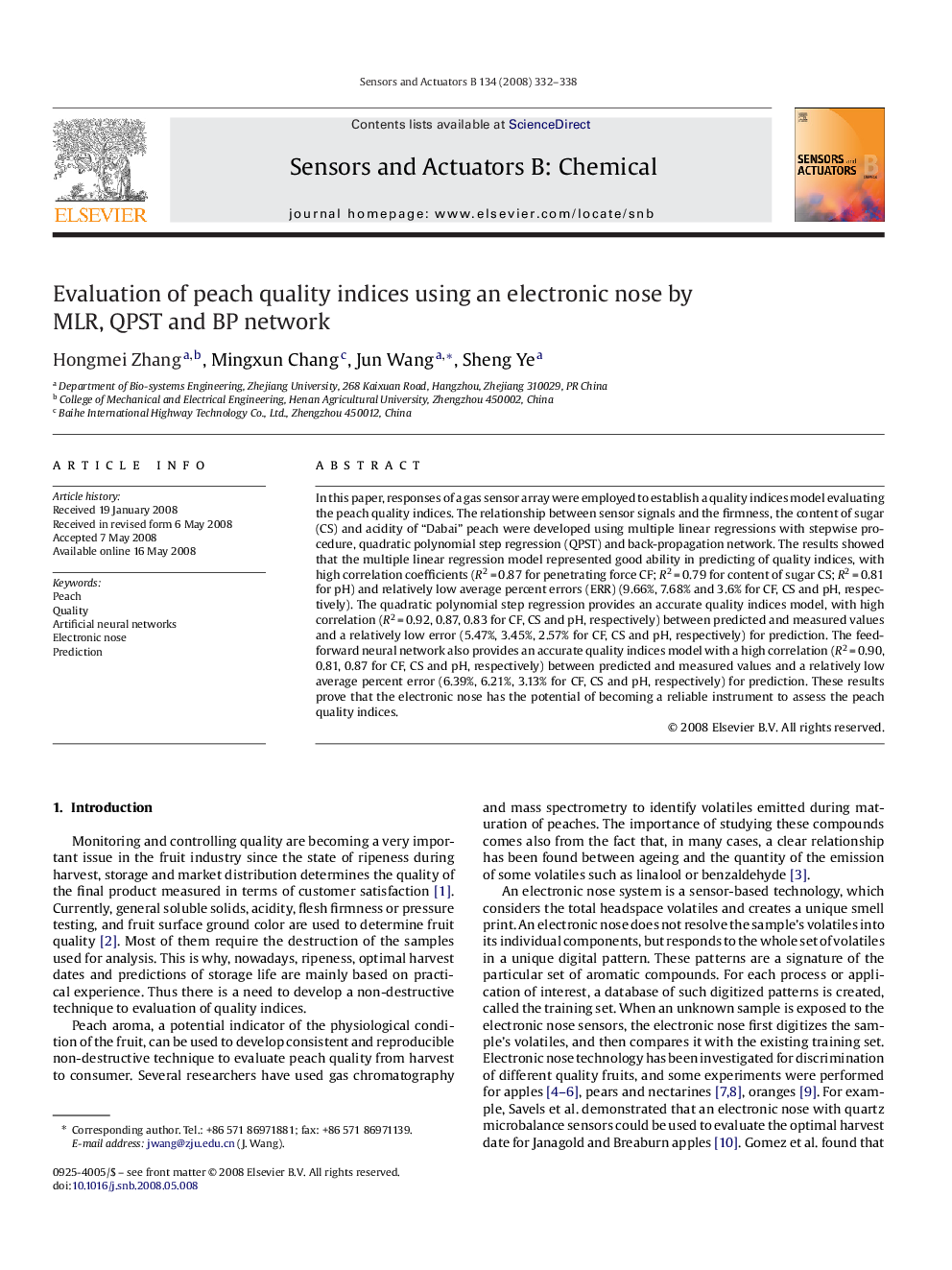| Article ID | Journal | Published Year | Pages | File Type |
|---|---|---|---|---|
| 743587 | Sensors and Actuators B: Chemical | 2008 | 7 Pages |
In this paper, responses of a gas sensor array were employed to establish a quality indices model evaluating the peach quality indices. The relationship between sensor signals and the firmness, the content of sugar (CS) and acidity of “Dabai” peach were developed using multiple linear regressions with stepwise procedure, quadratic polynomial step regression (QPST) and back-propagation network. The results showed that the multiple linear regression model represented good ability in predicting of quality indices, with high correlation coefficients (R2 = 0.87 for penetrating force CF; R2 = 0.79 for content of sugar CS; R2 = 0.81 for pH) and relatively low average percent errors (ERR) (9.66%, 7.68% and 3.6% for CF, CS and pH, respectively). The quadratic polynomial step regression provides an accurate quality indices model, with high correlation (R2 = 0.92, 0.87, 0.83 for CF, CS and pH, respectively) between predicted and measured values and a relatively low error (5.47%, 3.45%, 2.57% for CF, CS and pH, respectively) for prediction. The feed-forward neural network also provides an accurate quality indices model with a high correlation (R2 = 0.90, 0.81, 0.87 for CF, CS and pH, respectively) between predicted and measured values and a relatively low average percent error (6.39%, 6.21%, 3.13% for CF, CS and pH, respectively) for prediction. These results prove that the electronic nose has the potential of becoming a reliable instrument to assess the peach quality indices.
